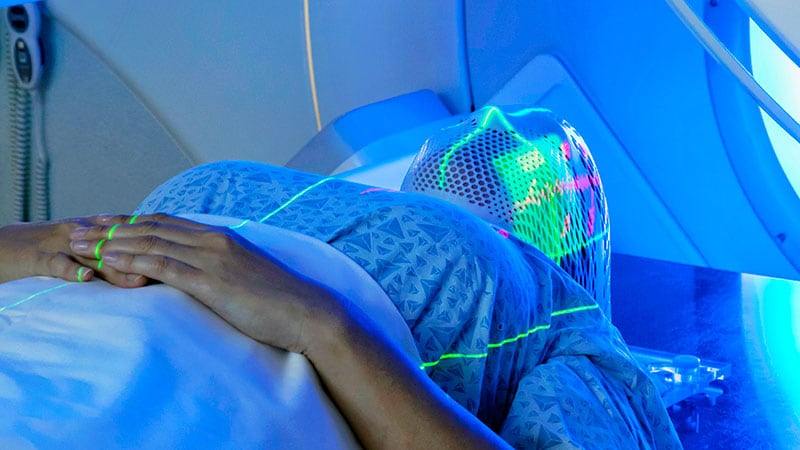Optometrist Sues After Firing On Return From Maternity Leave Optometrist Sues After Firing On Return From Maternity Leave
April 1, 2024Can Serum S100B Monitoring Help Kids’ Head Trauma? Can Serum S100B Monitoring Help Kids’ Head Trauma?
April 1, 2024
TOPLINE:
Treatment with palliative “Quad Shot” radiotherapy with concurrent immunotherapy appears safe and significantly improves local control in symptomatic patients with recurrent and metastatic head and neck cancer, but may not significantly improve overall survival, new research showed.
METHODOLOGY:
- Local disease progression can reduce the quality of life for symptomatic patients with recurrent and metastatic head and neck cancer. Immunotherapy, the current standard of care, provides limited disease control benefits or symptom control, particularly for individuals who are not eligible for curative intent treatment.
- Palliative radiation therapy is often used to help prevent local progression and alleviate symptoms from locoregional disease. Previous research has found that “Quad Shot,” a cyclical hypofractionated palliative radiotherapy regimen, could help improve local progression, but this regimen alone may not be adequate for long-term disease control.
- The current analysis evaluated “Quad Shot” given concurrently with immunotherapy to see if the combination provided better local control and symptom relief than the radiation alone.
- In this single-center study, the researchers analyzed 70 patients with symptomatic head and neck cancer who received at least three cycles of Quad Shot radiotherapy with or without concurrent immunotherapy within 4 weeks of radiation.
- More specifically, all patients received four twice-daily fractions of 3.7 Gy each, over 2 consecutive days, with treatment cycles repeated every 3-4 weeks. Forty of these patients (57%) also received concurrent pembrolizumab, nivolumab, or cemiplimab within 4 weeks of radiation. The study outcomes included local and distant control, overall survival, and adverse events.
TAKEAWAY:
- Quad Shot radiotherapy with concurrent immunotherapy demonstrated significantly better local control rates compared with Quad Shot radiotherapy alone at 12 months (84.7% vs 63.3%; P = .038) and at 24 months (75.3% vs 43.4%). The combination treatment significantly reduced the risk for local progression (hazard ratio, 0.238).
- The distant control rate was lower in the combination group at 12 months (56.4% vs 63.2%) but higher at 24 months (56.4% vs 48.8%); the findings, however, did not reach statistical significance at either timepoint.
- Similarly, overall survival rate at 12 months was lower in the combination group (30% vs 43.6%) but slightly higher at 24 months (21.8% vs 20.3%), and again neither group reached statistical significance. Median overall survival was also slightly worse in the combination group (9 vs 10 months).
- Grade 3 adverse event rates, however, were lower in the combination group (17.5% vs 30.0%; P = .622).
IN PRACTICE:
The combination of Quad Shot radiotherapy and immunotherapy “represents a promising treatment option” for improving local control and symptoms in patients with head and neck cancer who are not candidates for curative-intent treatment, the authors wrote. However, whether the combination confers an overall survival benefit would need further exploration.
SOURCE:
This work, led by Rituraj Upadhyay at The Ohio State University Wexner Medical Center in Columbus, Ohio, was published online in Cancers.
LIMITATIONS:
The retrospective design introduced inherent biases, hindered the comprehensive assessment of treatment-related toxicity between the two treatment groups, and limited the ability to conclusively determine the superiority of concurrent treatment. Small sample size was also a limitation. Moreover, the results cannot be generalized to patients receiving less than three radiotherapy cycles.
DISCLOSURES:
This study received no external funding. The authors declared no competing interests.
